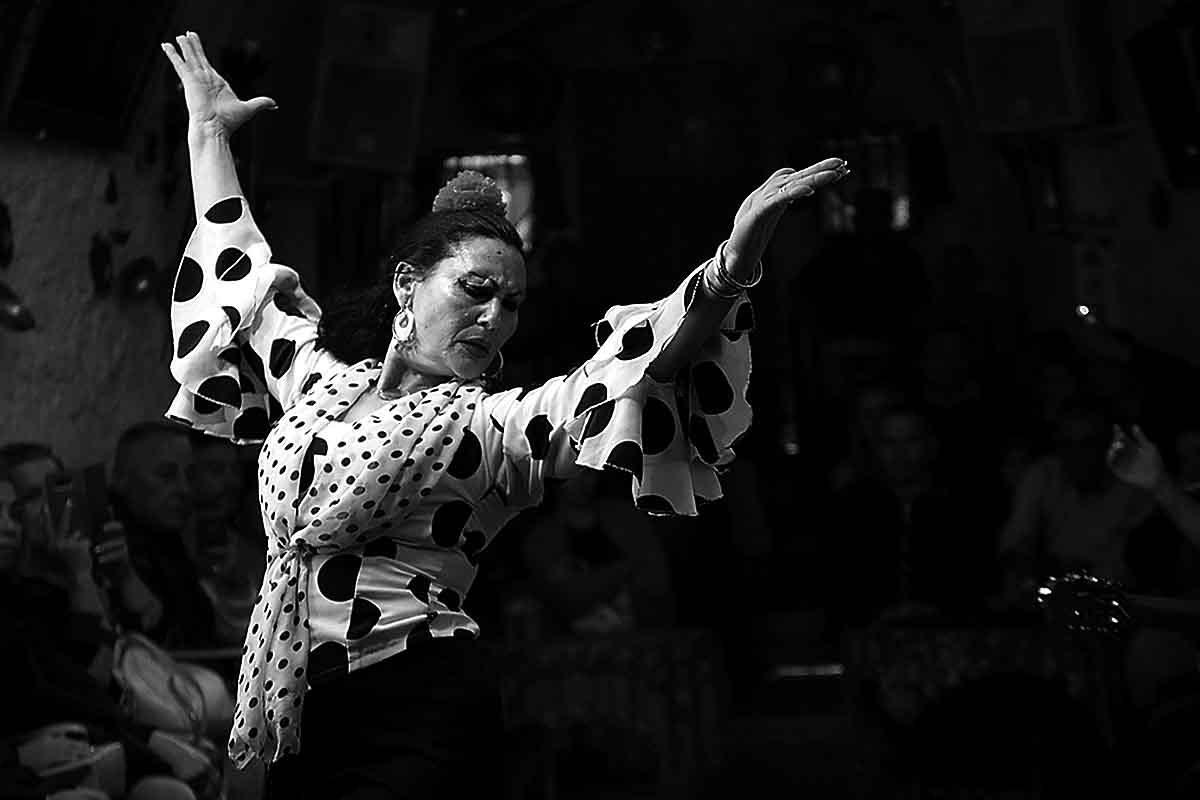Flamenco is used to describe a family of song and dance styles created in the Andalusian crossroads of cultures. Some historians point out that it comes from Islamic songs. Others from Jewish chanting melodies. There are also specialists who place it very close to Hindu musical systems, based on the fact that gypsies exported it to the Iberian Peninsula in the 15th century. Whatever it might be, flamenco, or cante jondo as it is also known, is the most representative expression of Andalusian folklore. Hence, it is an art closely linked to Granada and especially to the Sacromonte district.
Flamenco | Granada

Origins of Flamenco and the Sacromonte of Granada
Sacromonte is one of the well-known cradles of Flamenco in Spain. After the conquest of Granada in 1492, the Moors were forced to leave the city walls and settled in Sacromonte. It was there where they met with the gypsies, a nomadic tribe pushed south of Spain as the conquest of the Catholic Kings progressed. From that moment on, both cultures coexisted and mixed in different ways. There was a great affinity between them because they were both considered outcast by society. In 1499 a law approved by the Catholic Kings forced the gypsies to convert to christianity and abandon their nomadic lifestyle.
As a result, after the definitive expulsion of the Moors, the Sacromonte became a permanent gypsy neighborhood. Between the 18th and 19th centuries, when the romantic writers arrived in Granada, the Flamenco emerged as an artistic expression recognised throughout the world. It was this appreciation that made it a discipline and a specific musical style. Flamenco came out of the intimacy of gypsy folklore. At this time the Sacromonte Caves became famous. Travellers went to the Sacromonte to meet the most authentic Spanish gypsy culture.
The Flamenco Zambra
The origin of the Zambra, the Traditional Flamenco of Granada, cannot be understood without the previous lines. Its comes from the Arabic zumrã, meaning party. It was the traditional Moorish wedding ritual. This was banned by the inquisition in the 16th century, nevertheless it continued to be held underground. The Zambra tradition was absorbed, learned and transformed by the gypsies of the Sacromonte, who assimilated it as their own tradition. The gypsies themselves are the only remnant of the Moorish musical tradition. The ones who maintain the heritage of those Moors and who made it evolve towards the music we know it today.
Flamenco in its early days, was only a voice accompanied by the rhythm of a wooden stick (palo) hitting the ground. These are the oldest forms of songs known today, and from where all the styles have developed. Flamenco is made up of different musical forms called palos, like for instance, alegría, bulería or soleá. Each palo has its own characteristics in terms of mood, and rhythm. A show represents a sequence of songs. Everyone of these songs will use a different palo which sets the tone, rhythm and mood of the music and dancers.
Flamenco is made up of four elements. These are cante (singing), baile (dancing), guitar playing and jaleo (handclapping, tap dance and shouts of encouragement). This latter is performed by the artists as well as anyone else with the urge to participate. The handclapping or Palmas is an art in itself, although it may look easy, it is not. Another important component of flamenco is the duende, and this is involved in as much mystery as flamenco itself. Artists over the years have given duende a mysterious meaning that goes beyond human understanding.
The Tablao Flamenco
If you want to see live flamenco you must go to a tablao, a venue specialized in flamenco performances. In order to do this your best bet is the Sacromonte or the nearby Albaicin. They are many options just minutes away from Art Chapiz Apartments. Scroll down to see our selection.










Follow Us
OUR SOCIAL MEDIA CHANNELS
Follow us for the latest news and offers.